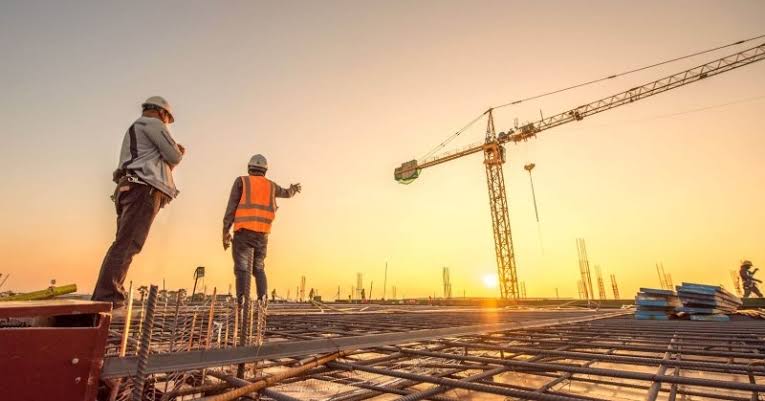The Impact of Construction on Economic Growth

Construction is about more than building towering skyscrapers or designing beautiful homes — it’s about creating the very foundation of our economy. From the bustling cities of New York to the rising megacities in Asia, construction has always played a central role in shaping economic structures. Whenever a crane moves steel or a foundation is poured, it sparks a ripple effect across the economy, creating jobs, attracting investments, and driving growth.
Whether a small town expands its roads or a global metropolis undergoes a major facelift, construction fuels development at every scale. In the process, it transforms communities, improves infrastructure, and creates opportunities for businesses to thrive. To fully appreciate construction’s influence on economic growth, it’s important to explore how different aspects of the industry impact the economy in unique ways.
How Does Construction Drive the Economy?
The economic footprint of the construction industry is massive. Every building project, from a modest residential home to a multi-billion-dollar stadium, injects life into local economies.
Construction creates jobs for laborers, engineers, architects, and other professionals involved in planning and execution. These are not just temporary jobs — large-scale projects can employ thousands of workers for years at a time.
Beyond direct employment, the construction industry supports various other sectors, including material suppliers, transportation companies, and even local businesses near construction sites.
For example, Dubai’s meteoric rise into a global financial hub was fueled by a construction boom. The city’s iconic skyline, with architectural feats like the Burj Khalifa, wasn’t just a display of engineering prowess; it represented an influx of tourism, trade, and global investment. The same principle holds in any growing region: where construction thrives, economic activity follows.
Infrastructure and Economic Development
Infrastructure projects are often the backbone of economic progress. Roads, bridges, airports, and ports are essential for a thriving economy. When governments invest in infrastructure, they lay the groundwork for long-term economic growth by improving connectivity and making trade and transportation more efficient.
In developing countries, building new infrastructure can mean the difference between stagnant growth and rapid economic advancement. Take China’s Belt and Road Initiative as an example. This massive infrastructure project, spanning multiple countries, is designed to improve trade routes and stimulate economic cooperation across Asia, Europe, and Africa.
Real Estate and Urbanization
The rise of urbanization has been a driving force behind real estate development, with construction playing a pivotal role in shaping the future of cities. As populations grow and people flock to urban centers for better opportunities, the demand for housing, commercial spaces, and infrastructure surges. Real estate development becomes essential not only to accommodate these growing populations but also to stimulate local economies.
When a city like New York experiences a construction boom, the impact is felt across multiple industries. Real estate developers create new housing projects, office buildings, and retail spaces, which attract residents, businesses, and investors. This leads to a surge in property values, increases in tax revenue for local governments, and more jobs. Urbanization doesn’t just expand a city’s physical footprint — it strengthens its economy by providing the infrastructure needed for sustained growth.
However, rapid urban development also presents challenges. Safety regulations must keep up with the pace of construction to prevent accidents and ensure workers are protected. Managing the legal and safety aspects of construction projects becomes especially important in high-density cities, where there are more risks due to the complexity of the projects.
Innovation in Construction: A Boost for the Economy
In today’s world, construction is no longer just about bricks and mortar. Innovations in technology, such as 3D printing, automated machinery, and green building techniques, are reshaping the construction landscape and bringing economic benefits in their wake. These advancements increase efficiency, reduce waste, and allow for faster completion times, saving time and money.
Sustainability is at the forefront of modern construction projects, with eco-friendly materials and energy-efficient designs becoming more popular. The shift towards green construction creates new markets, driving demand for specific skills and materials. This evolution is good for the environment and the economy, as it opens up new business opportunities and promotes long-term growth.
As construction projects become more complex, it is crucial to ensure their safety. In places like New York, where high-tech and high-rise projects are constantly underway, legal oversight is essential to overcome the risks involved. The role of a New York Construction accident attorney becomes increasingly important in safeguarding the interests of workers and maintaining legal compliance in these ever-evolving construction environments.
Constructing a Prosperous Tomorrow
Construction is undeniably one of the most influential forces in economic growth. From creating jobs and boosting real estate markets to building the infrastructure needed for future development, its impact is felt at every level of the economy. As cities expand and technologies advance, construction will remain a key player in shaping the global economic landscape.
Looking ahead, the focus on sustainability and innovation promises to drive the construction industry further, bringing economic benefits while ensuring more efficient and environmentally conscious practices. The road to economic progress may be paved with concrete and steel, but the vision of a more connected, prosperous world lies in the hands of the construction industry.
Read More: Quick Tips for Succeeding as a Contractor in North Carolina





